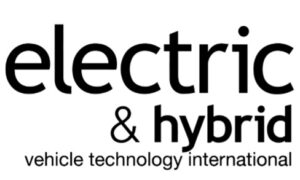
Last month on January 16, a significant fire erupted at the Moss Landing Energy Storage Facility in California, one of the world’s largest lithium-ion battery storage sites. The Monterey County Sheriff’s Office issued an evacuation order to approximately 1,500 residents in Moss Landing and the Elkhorn Slough area due to potential exposure to toxic smoke. The fire continued to rage and smolder through the night into the morning, and due to the challenges in extinguishing a fire of this type and size, firefighters were forced to allow the fire to burn out on its own. An investigation will commence to unveil the root cause of the incident.
The response thus far has been sobering. The New York Times featured displaced residents voicing fears about long-term health impacts. Officials are under scrutiny, with Monterey County’s Supervisor describing the fire as a “Three Mile Island event for this industry,” a reference to a 1979 nuclear power plant meltdown in Pennsylvania that cost the nuclear industry public support.
This is not the first lithium battery fire, but it is the largest and most consequential to date. The incident raises urgent questions: Can batteries be relied upon to support surging power demand from data centers and EVs? What happens if we scale to 10 million distributed energy installations without first solving safety risks? What do we – i.e. the battery industry – do now?
Some outside the industry are arguing it’s time to pull the plug on lithium battery storage altogether, emphasizing the risks outweigh the benefits. Others insist this fire was an outlier, pointing to major safety advancements since Moss Landing’s system was commissioned in 2020.
Both perspectives on the issue matter. What must be avoided, however, is dismissing public concerns while incidents keep happening, as this can erode trust even further. Critical at this moment is ensuring this debate doesn’t devolve into an all-or-nothing shouting match that stalls progress entirely.
Rather, an event like this should serve as a pivotal moment—not as a reason to retreat from battery storage, but as an opportunity to accelerate innovation and reinforce public trust. The energy transition depends on safe, reliable storage solutions, and while lithium-ion technology has enabled incredible progress to balance an aging electric grid, we must continuously evolve to meet new challenges.
That’s why the battery sector must lead the charge in addressing safety—not just react to disasters. If you look at recent headlines in the battery space, the focus is around reaching new heights of energy density or breaking records for the size of new installations. While these advancements are certainly important for the industry, there is relatively less emphasis on the evolving landscape of safety risks. If the Moss Landing fire does not reshuffle the industry’s priorities to center safety in achieving long-term market success, then it’s unclear what ever would.
Battery storage cannot fulfill its promise without trust, and trust is built on proven safety. The Moss Landing fire underscores the need for a shift: rigorous testing, failure scenario preparedness, a plan beyond “let it burn,” and perhaps moving beyond lithium-ion altogether.
Safety cannot be minimized if battery storage is to remain a pillar of electrification. The industry must meet this moment with transparency, innovation, and an uncompromising commitment to safety. At Alsym, we believe the future of battery storage must be built on a foundation of safety, and that is why we have pioneered an energy storage solution that is high-performance yet cannot burn.
Through non-flammable, high-performance battery solutions that can power the grid without safety risks, Alsym aims to make energy storage accessible and reliable for all.
Contact us to learn more about Alsym Energy’s American-made, high-performance and non-flammable/non-toxic batteries.




